Unleash the potential of a clutter-free and organized lifestyle with these practical decluttering tips tailored specifically for seniors.
Navigating the process of decluttering can be a daunting task, especially for seniors. As we age, we accumulate a lifetime’s worth of items, which can make the task seem overwhelming.
However, with the right strategies and tips, seniors can effectively declutter their space, making their homes safer and more comfortable. This article provides practical, easy-to-follow decluttering tips specifically tailored for seniors.
From sorting strategies to safe lifting techniques and disposal options, this comprehensive guide covers all aspects of decluttering for seniors. Read on to discover how to make the decluttering process smoother and more manageable.
Understanding the Need for Decluttering

A surplus of possessions can pose physical risks, such as tripping hazards and blocked pathways. Besides these safety concerns, living in a cluttered environment can negatively impact mental health. Excessive items can cause feelings of stress and anxiety and may impede the ability to focus. Moreover, an overly cluttered home can make house maintenance a challenging chore.
By reducing excess possessions, seniors can create a safer living space, enhance mental well-being, and simplify household tasks.
The Psychological Benefits of Decluttering

Embracing tidiness can notably improve mental well-being. The act of decluttering fosters a sense of accomplishment and control over the environment, leading to reduced stress levels.
An uncluttered space also promotes better focus by eliminating distractions. Simultaneously, the process of sorting through items could evoke positive memories that boost mood.
Moreover, donating unused items adds a sense of generosity and purpose to the process, fostering feelings of happiness. Evidence even suggests, a decluttered environment promotes better sleep.
Thus, decluttering not only enhances physical living conditions but also substantially improves psychological health.
Preparing for the Decluttering Process

Before diving into the act of decluttering, it’s crucial to have a plan. A thought-out strategy eases the entire process.
Begin by identifying what needs to be decluttered – from rooms to specific items. Don’t forget about overlooked areas such as the attic, garage, or utility closet.
Secure durable storage boxes to sort items into categories like ‘keep’, ‘donate’, ‘sell’, or ‘recycle’. Remember, decluttering doesn’t mean getting rid of everything, it’s all about organization and reducing items that are no longer necessary.
It’s also wise to designate a space in your home where you can temporarily hold the items destined for donation or sale, keeping them separate from the spaces you’re decluttering.
With your strategy in place and supplies on hand, you’re ready for a more organized and spacious lifestyle.
Recognizing Lifestyle Changes
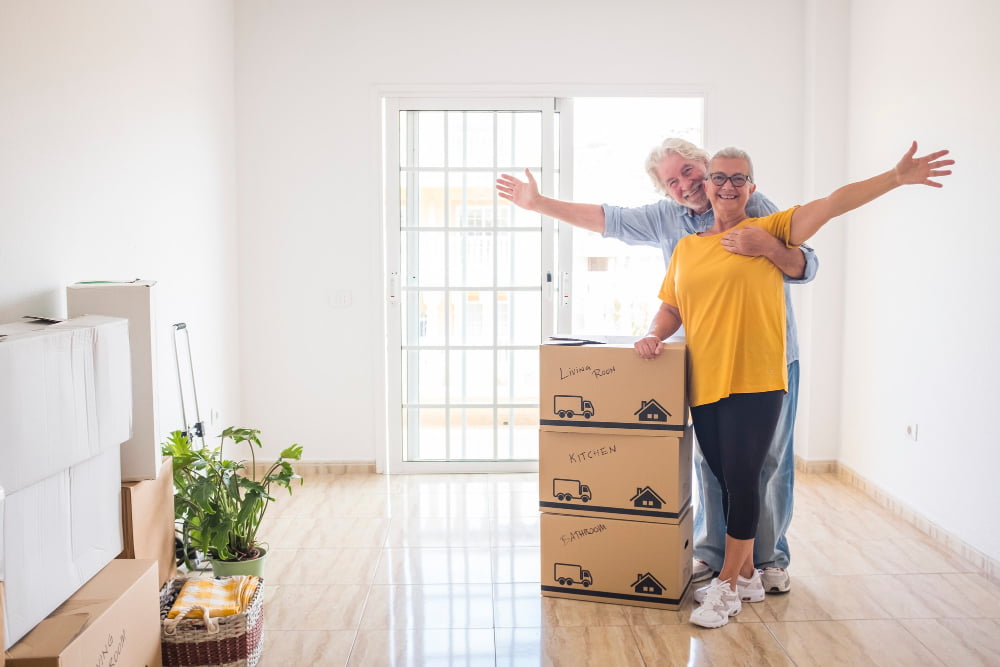
As one enters the senior years, certain lifestyle changes might require a shift in the types of items needed on a daily basis.
Maybe the children have moved out, leaving empty rooms filled with unused items.
Perhaps retirement has replaced a once busy work schedule, reducing the need for office attire and supplies.
Understanding these shifts provides a roadmap for decluttering, highlighting items that no longer serve a purpose in the current lifestyle.
Focus on these items first, making way for a more optimized living space tailored to your needs.
Setting a Decluttering Schedule
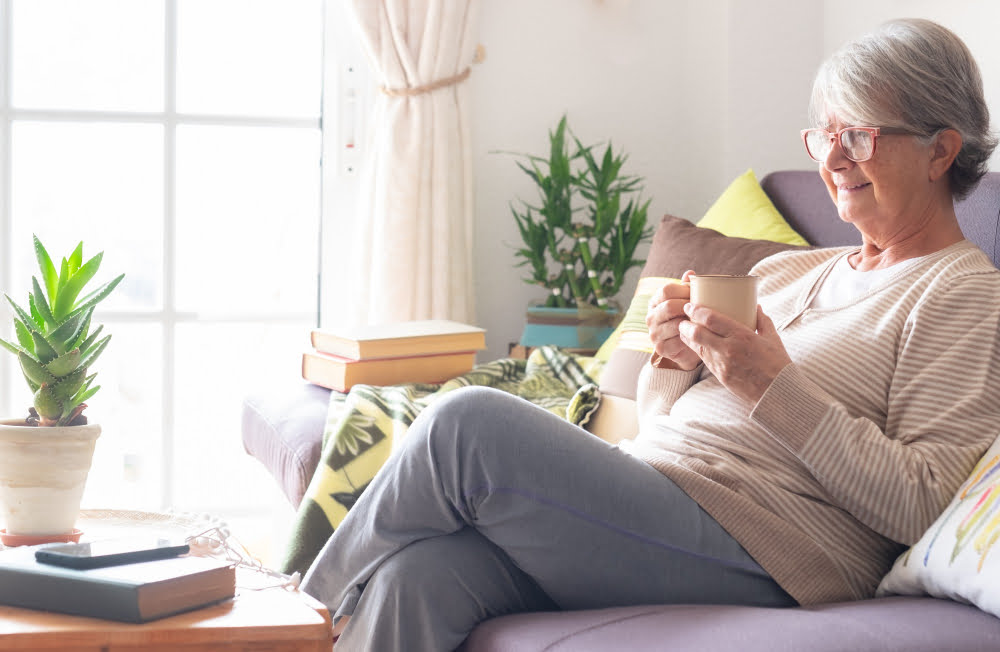
Chalking out a systematic routine can reduce the seeming enormity of the task. Initially, dedicate a manageable amount of time each day, such as 15 to 30 minutes, to clearing out clutter.
Progressively increase the duration as you become comfortable with this activity. Be consistent and stick to the schedule even if the progress seems slow. Remember, your goal should be progress, not perfection.
Breaks are equally important as they prevent fatigue and maintain interest in the task. A good rule of thumb could be to take a 10-minute break for every hour decluttered. Avoid planning all decluttering activities in one go; this can be overwhelming and hinder progress.
Easy Decluttering: Room By Room Approach

It’s important to handle decluttering in manageable chunks to avoid feelings of overwhelm. One effective method is by focusing on a single room, or even a particular zone within that room, at a time. Start with less emotionally taxing areas such as the bathroom or the laundry room.
As you progress, you’ll build up the confidence to tackle complex spaces like the attic or basement.
Bring three bags or boxes in each room for trash, donations, and items to keep. This system helps sort your belongings quickly. As you go through each item, ask yourself—does this serve a purpose? Does it make you happy? If not, consider letting it go.
Move to the next room only when you’re done with the current one. This systematic approach helps prevent the spread of clutter around your house and makes the task less daunting. Patience and consistency are key in this journey towards clutter-free living.
Start With One Room
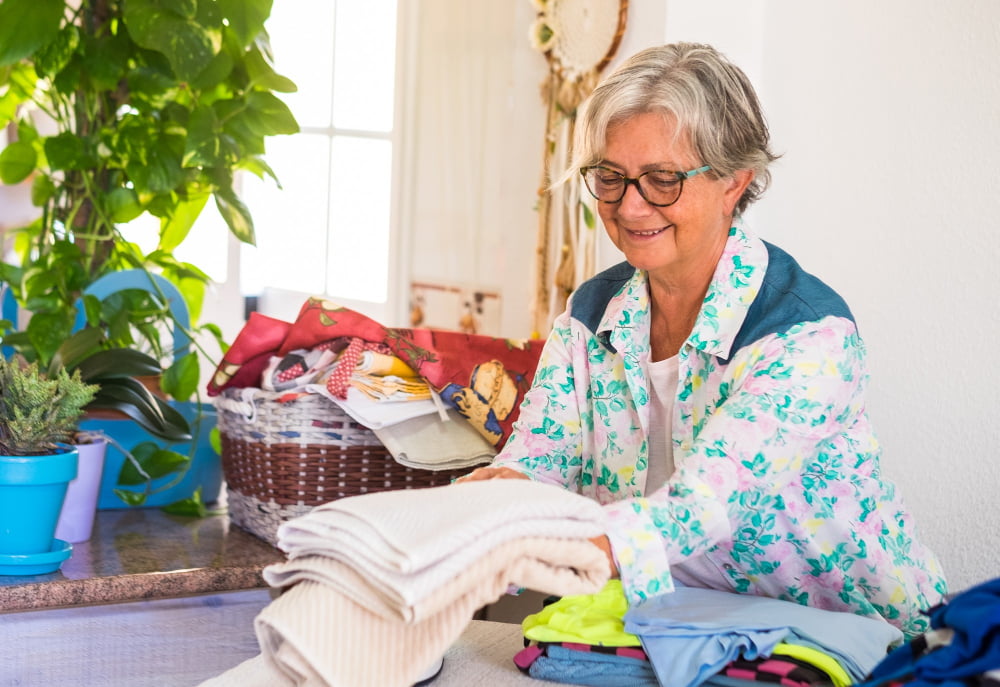
Embarking on the decluttering journey, it’s recommended to focus on one area at a time to prevent feeling overwhelmed. While it might be tempting to tackle multiple spaces simultaneously, this often leads to scattered efforts and incomplete tasks.
Limiting your focus to one room serves to create an immediate sense of accomplishment, and a tangible improvement in your living space, which further motivates to continue the process.
Begin with a space that is used frequently. Regular use areas, like the living room or kitchen, when decluttered, can have an immediate positive impact on daily life.
Sort items into categories: keep, donate, sell, or throw away. This systematic approach ensures every object is deliberately considered and assigned a place. Remember, the goal is to keep only what is necessary, meaningful, or brings joy.
Repeat this process for each room, building momentum as you witness your home steadily becoming more organized and clutter-free.
Tackling Spaces One At a Time
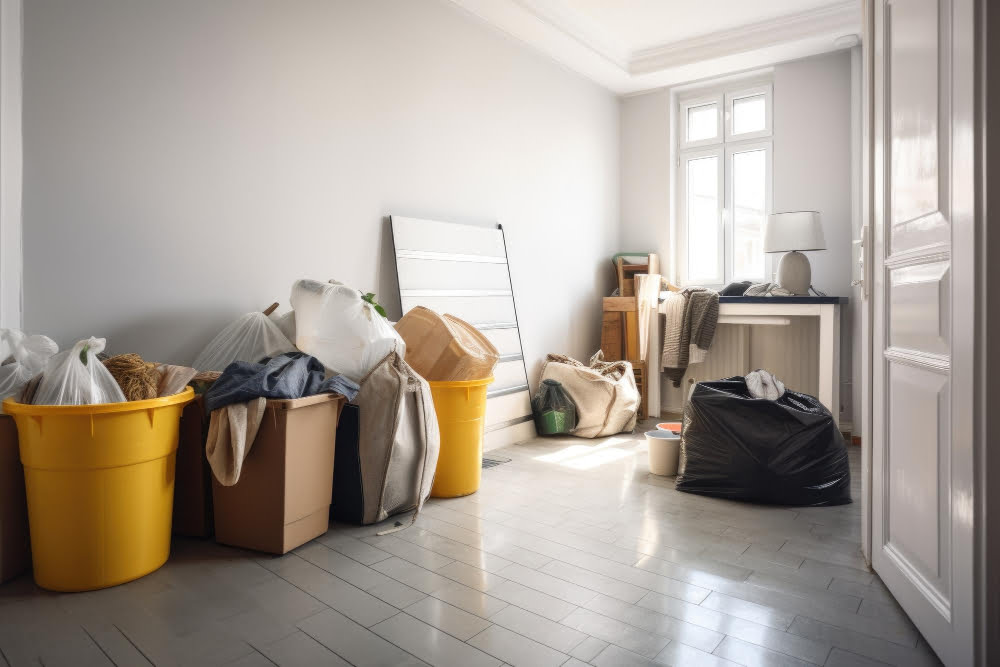
To avoid feeling overwhelmed, focus on one area of your home at a time.
It could be as small as a desk drawer or as large as the garage.
Completely clear this space, only returning items that are necessary and bring joy.
Dispose of, donate or sell anything that doesn’t meet these criteria.
Once you have finished with one area, give yourself a break if needed, then move on to the next.
This steady, systematic approach can make a large task more manageable and less intimidating.
Remember, it’s not a race—decluttering is a process that requires patience and determination.
Tips On Dealing With Sentimental Items
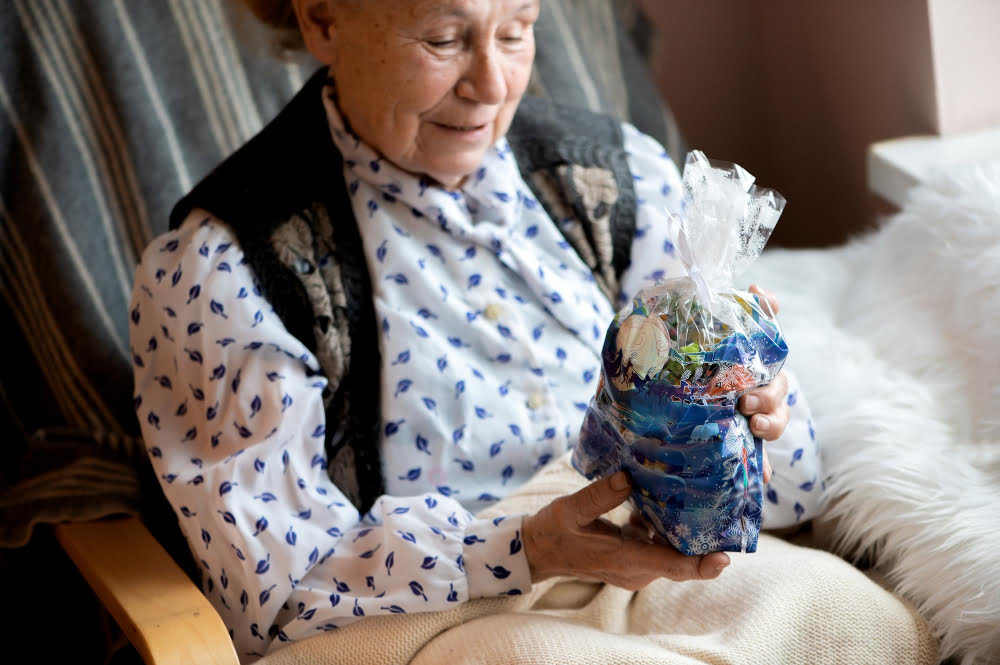
Keeping or discarding sentimental items can be a challenging decision. However, remember – it’s the memory associated, not the object, that matters. Consider documenting these items through photos or creating a scrapbook of memorabilia.
This way, you can capture the sentiment without the clutter. Another option might be to repurpose items. For instance, family heirloom linens can be transformed into a charming quilt. If you find objects that may be of interest or use to family members or friends, consider offering them as gifts.
Just be sure to ask first to avoid burdening others with unnecessary items.
Dealing With Childhood Memories

Navigating through items tied to your past can be emotionally taxing. Often, objects like your children’s old drawings, school trophies, or favorite childhood toys carry a huge amount of sentimental value.
However, they can also consume considerable space and add to clutter. Start by selecting a handful of key pieces that truly capture the essence of those times.
Consider digitizing photos or letters to keep them safe and accessible without physical bulk. For physical items that you can’t part with, consolidate them into a dedicated memory box. Alternately, consider repurposing items, like turning fabric from old clothing into a quilt.
Remember, the goal isn’t to erase history but to honor it in a manageable, space-efficient way.
Donations and Selling Unused Items

Decluttering provides an excellent opportunity to give back to the community. Donating belongings that are in good condition but are no longer needed can significantly benefit local charities.
From clothing and books to furniture and kitchenware, there are countless organizations that would welcome these items. It’s not only a great way to reduce clutter but also help those in need.
On the other hand, if there are items of value which are not needed any longer, consider selling them. Online platforms like eBay, Amazon, or Facebook Marketplace are easy ways to sell unused items.
Local consignment stores, yard sales, or flea markets are also suitable options. Remember, the goal is to clear space in the house, reduce clutter, and in the process, possibly, make some extra money.
Making Extra Income By Selling Unused Items
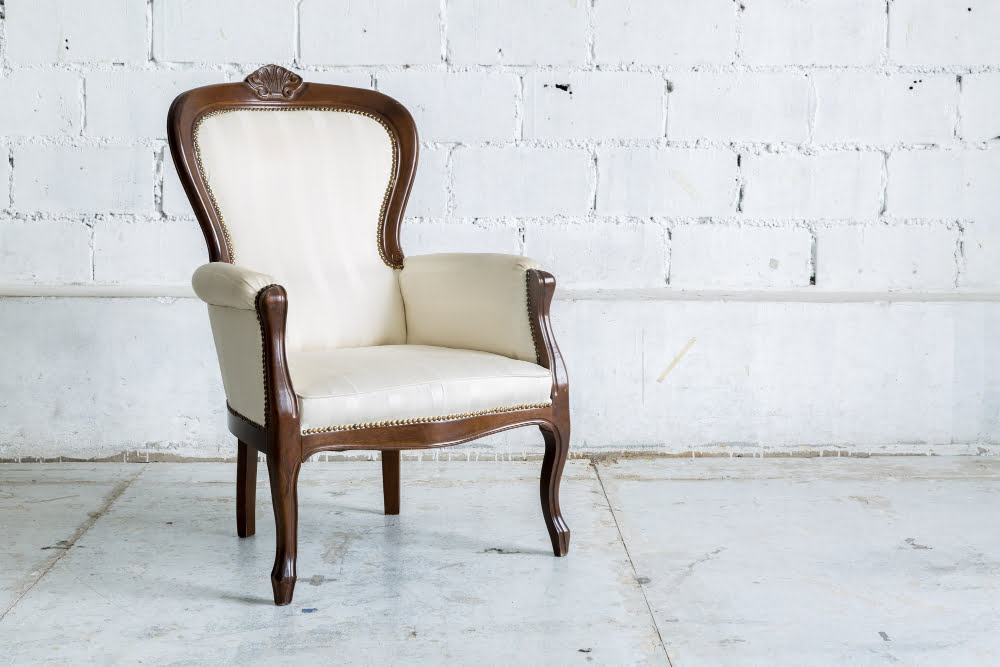
Online selling platforms such as eBay, Amazon, and Craigslist, alongside local options like yard sales and consignment shops, can turn your clutter into cash.
Keep in mind several factors when selling: the condition of the item, its potential value, and the time and effort you can allocate for the sale.
For antiques or art, consider getting an appraisal to understand their worth.
Remember, one man’s trash is another’s treasure, so think twice before discarding an item.
However, refrain from retaining items in the hope of a future sale.
If it doesn’t sell within a reasonable period, consider donation options.
Clothing, books, and small household appliances are often in demand.
Not only will selling unused items make your spaces cleaner, but it could also boost your income.
Safe Disposal of Old Medications and Electronics

When it comes to getting rid of old medications, your best option is usually local drug take-back programs. These programs, often offered at community pharmacies or police departments, are designed to safely dispose of outdated or unused medications. They help prevent environmental contamination and misuse of drugs.
For electronics, consider e-waste recycling programs or facilities. Many electronics, such as computers and televisions, contain hazardous materials and metals. These components should not be disposed of in regular household garbage. Retailers or manufacturers might also have take-back programs. Remember to delete any personal data before disposal or recycling. If a device is still working properly, donating it can also be a beneficial option.
Preventing Falls Through Decluttering

Reducing clutter in high-traffic areas is an essential step towards improving home safety, especially for seniors who face higher risks related to falls.
Start by identifying potential hazards such as loose rugs, stacked newspapers, and electrical cords that may pose as tripping problems.
Clear pathways in all rooms, ensuring that the space between furniture is wide enough for easy navigation.
A common trouble area is the stairway – make sure it’s free of any objects.
Additionally, remember to keep frequently used items within reach to avoid the necessity of using stepladders or steps stools.
A well-organized, decluttered space not only eases daily activities but also significantly lowers the chances of accidents.
Passing Items to Family Members

It’s quite common to have items that hold significant sentimental value or are family heirlooms. Consider asking your children or grandchildren if they’re interested in keeping these items.
This way, precious belongings can remain within the family while also helping to reduce clutter in your home.
Remember to handle this sensitively as others may not attach the same sentiment to these items. If this is the case, you might think about photographing the items for the sake of memory, before donation or disposal.
Dealing With Duplicates

Identifying and eliminating duplicate items should be an integral part of your decluttering journey. Begin by categorizing similar items together, be it kitchenware, books, clothing, or tool sets.
It’s not uncommon to find multiples of the same object. Opt to keep the best-quality item and get rid of the rest.
Offering the surplus to family or donating to charitable organizations is an admirable way to discard them responsibly.
Remember, the idea of decluttering is not to empty your home, but rather to remove unnecessary redundancies. That way, you’ll optimize your space and maintain a streamlined lifestyle.
Organizing Documents and Personal Records

To prevent important paperwork from cluttering up living spaces, create a proper filing system.
Group related documents together, such as insurance policies, health records, tax documents, and estate planning files.
Use labeled folders to keep these groups neatly organized within a file cabinet.
Remember to safely discard of outdated documents regularly, ensuring to shred any paperwork containing sensitive information.
Implement a yearly review of your files to keep the system up-to-date and prevent it from overflowing.
Finally, opt for paperless statements and online record-keeping when possible to minimize physical paperwork.
Decluttering and Organizing the Kitchen
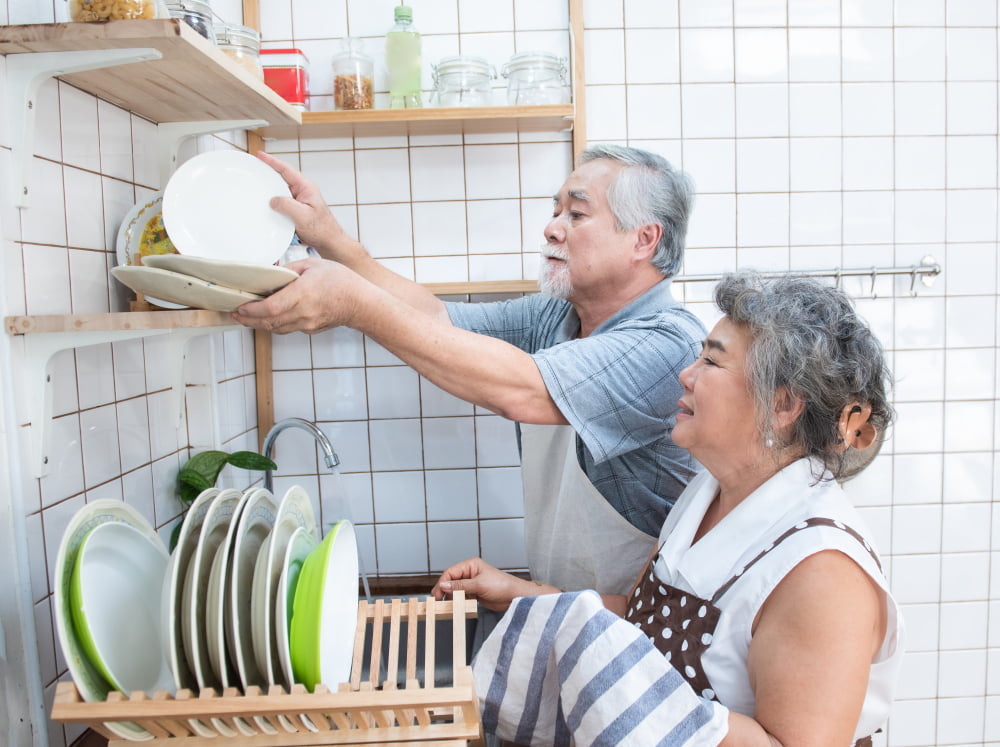
A systematic approach works best when dealing with multiple items characteristic of kitchens.
Start with the utensils, grouping similar items together, like forks, spoons, and knives.
Do the same for pots, pans, and cooking trays. Evaluate the items based on their frequency of use.
There might be aids and gadgets rarely used, considering giving these away or selling them.
Next, focus on grocery items. Check expiration dates and discard anything that has expired.
Divide remaining items into categories like cereals, canned goods, spices, etc., and store them together.
Remember, a clear container system can be particularly effective in pantries, allowing you to see your food supplies at a glance.
Lastly, surface cleaners and dishwashing liquids tend to pile up under the sink.
Check which ones are still effective, disposing of any outdated products.
Condense duplicates where possible, and store the remaining supplies conveniently for easy access.
With these small, calculated steps, your kitchen will be decluttered and efficiently arranged, making food preparation easier and more enjoyable.
Simplifying Your Wardrobe
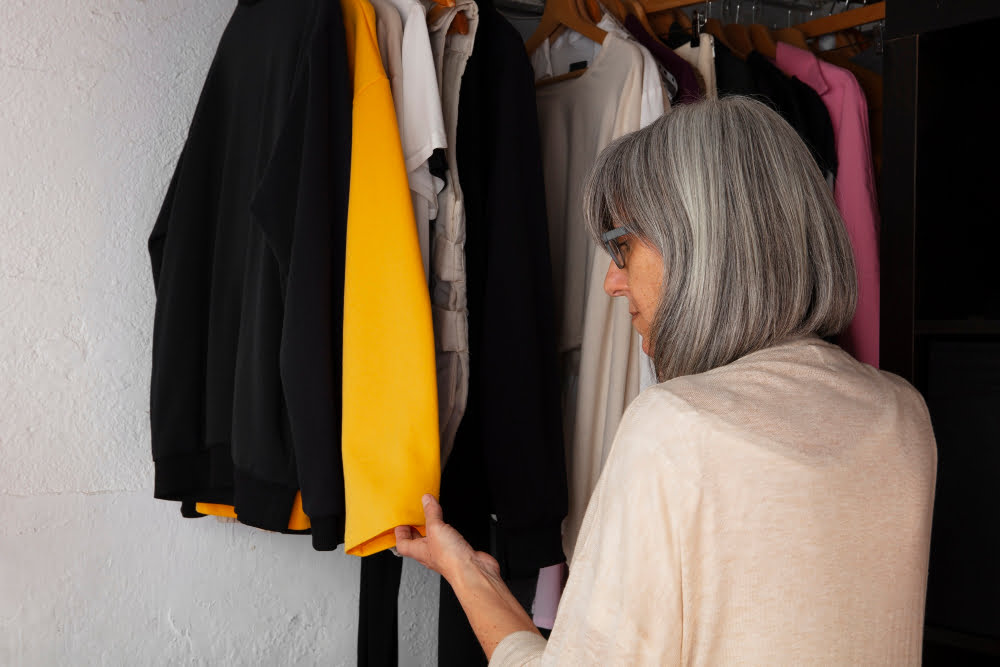
Start by removing clothing items that don’t fit anymore or haven’t been worn in the past year. These items take up valuable space and complicate daily dressing decisions.
Follow this by sorting the remaining clothes by season, setting aside off-season garments for storage. Categorize the in-season clothes into everyday wear, occasion wear, and activewear.
Use matching hangers for a unified and orderly visual appeal, making it easier to identify items. Consider investing in functional solutions like drawer dividers or shelf organizers for undergarments, socks, and accessories.
Lastly, return laundry directly to its designated location to maintain an organized wardrobe.
Smart Storage Methods
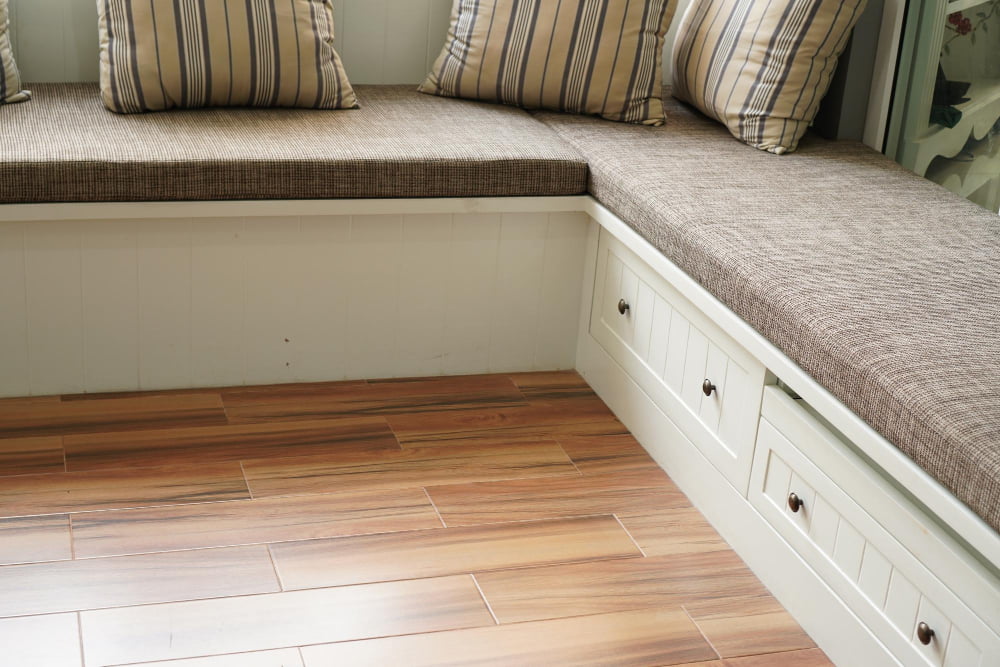
Maximizing storage efficiently can help maintain a tidy home. First, consider multifunctional furniture that offers built-in storage, such as ottomans or benches with hidden compartments. For small objects like jewelry, consider drawer organizers or partitioned boxes.
Vertical space, often overlooked, is excellent for storage; high shelves or over-the-door racks are ideal. Use clear bins or labels to quickly identify stored items. Lastly, storing items by usage frequency helps keep rarely used items out of the way while ensuring often-used items are easily accessible.
Effective storage methods can aid in keeping spaces clutter-free, providing harmonious and organized living.
Storage Solutions for Small Spaces
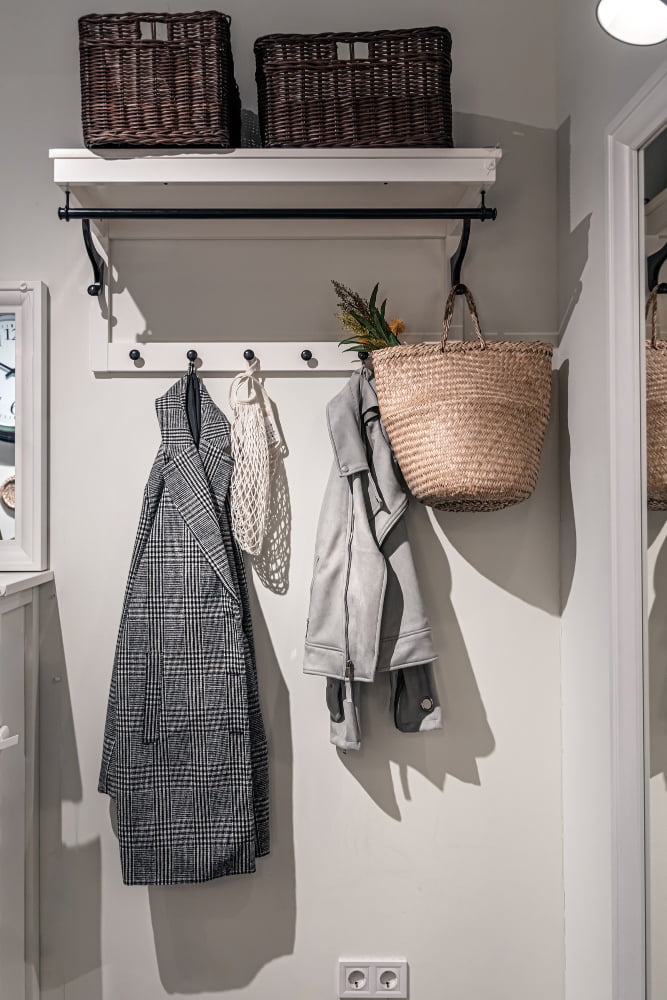
Optimizing your available space is crucial when decluttering. Consider utilizing vertical space by installing shelves, hooks, or racks on the wall to store items.
Multi-functional furniture, such as ottomans with storage compartments or beds with built-in drawers, can also provide valuable storage without requiring additional space.
Over-the-door organizers offer perfect solutions for small items in rooms such as the bathroom or bedroom while maintaining a neat appearance.
To store seasonal clothes or items, vacuum seal bags can significantly reduce volume and can be placed under the bed or in the bottom of a closet.
Making every square foot count will help you stay organized and decluttered.
Managing Decor and Knickknacks
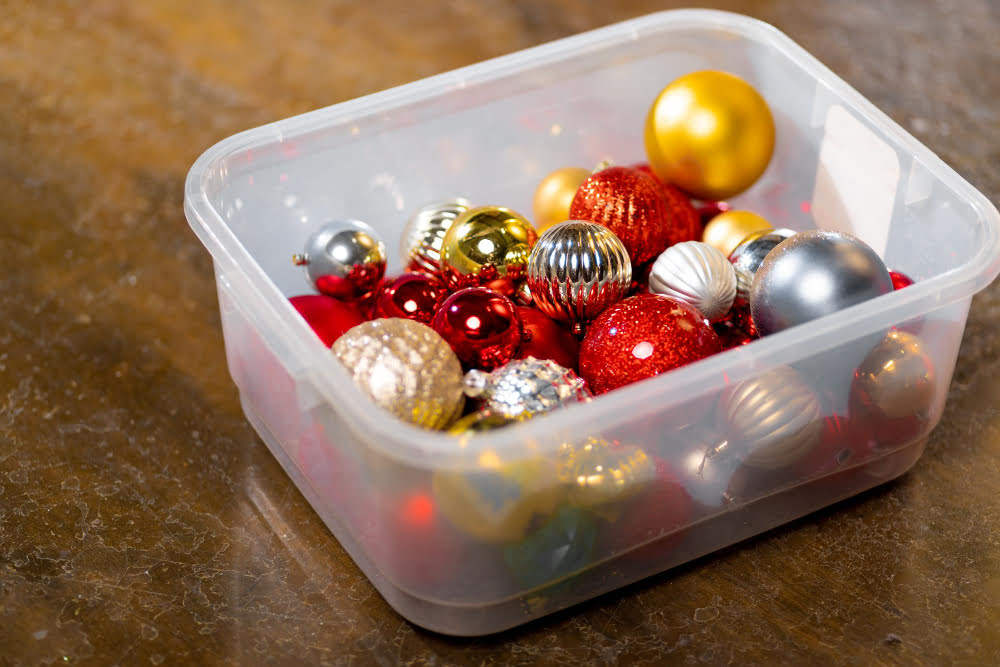
Organize your decorations by categorizing them into groups. Label each group depending on the season, holiday, or event it’s associated with.
Store out-of-season items in clear bins or containers. This will free up your living space and make it easier to find your favorite pieces when it’s time to use them again.
As for knickknacks, a good rule to follow is, less is more. Display only a few cherished items at a time.
Rotate these ornaments every few months to provide your home with a fresh look while protecting them from dust and possible damage.
Remember, it’s okay to part with items that no longer bring you joy or have no significant importance. Consider giving them away, recycling, or safely disposing of them.
Practicality, not sentimental value, should be the guiding principle in deciding what to keep.
Reducing Excess Furniture

The fewer pieces of furniture in a room, the more spacious and breathable the space becomes. It’s key to determine which pieces are rarely used or take up too much space.
After ascertaining furniture functionality, consolidate or eliminate unnecessary items.
Large items or ones with less usage could serve someone else better – consider selling, donating, or gifting them.
When reducing, focus on keeping items that assist with mobility and safety – like tables at the right height to put things on, or chairs that are easy to get in and out of.
Once completed, enjoy a more spacious living area with essential furniture only that perfectly match your needs and lifestyle.
Maintaining a Decluttered Home: Ongoing Tips

To ensure your home remains tidy, develop a routine to regularly review and discard items that you no longer need or use.
A good practice is to follow the popular “one in, one out” rule: for every new item that comes in, an old item should leave. This helps to prevent new clutter from accumulating.
If space allows, designate a box or bin for items to give away. Whenever you come across something you no longer use or need, place it in the box. When the box is full, donate, recycle, or sell the contents.
Also, consider digitizing paper clutter such as receipts, medical records, and important documents to reduce physical clutter. There are multiple apps available that can help with this task.
Lastly, ask for help from family, friends, or a professional organizer if maintaining a decluttered space becomes challenging. Remember, decluttering is a marathon, not a sprint. It’s okay to ask for assistance and take the process step by step.
Hiring Professional Help for Decluttering
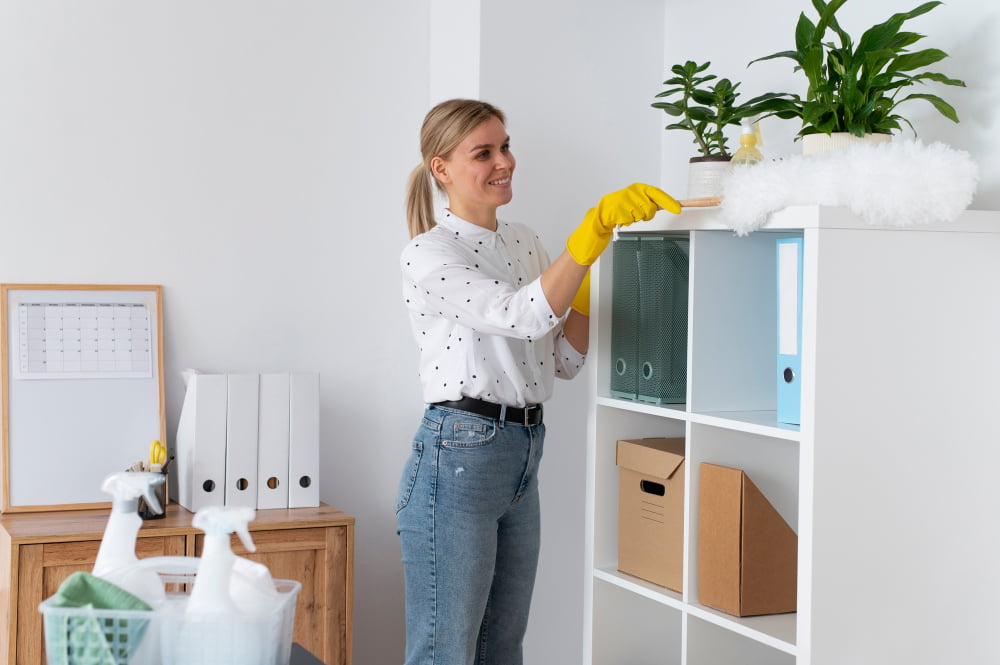
When faced with formidable decluttering tasks, considering the assistance of a professional organizer could be a beneficial option. They not only bring experience and knowledge, but also provide a neutral perspective, which can be helpful when making decisions about sentimental items.
Furthermore, hiring professionals can ease the physical strain associated with large-scale decluttering efforts, ensuring the process is safe and efficient for seniors.
A variety of services are available, ranging from consultation-based offerings to assisting with the entire decluttering process. To find the right help, asking for referrals, researching reviews online, or consulting professional organizing associations can be efficient strategies.
It’s important, however, to ensure that the professional understands and respects the unique needs of seniors during this process.
Investing in professional help can also provide long-term value. They can impart practical and personalized organizing strategies to maintain a decluttered space long after their work is done.
Despite the upfront cost, hiring professional help can be a worthwhile investment in reclaiming a clutter-free living environment.
Benefits of a Clutter-Free Environment

Embracing a clutter-free lifestyle can have significant positive impacts on both physical and mental well-being.
Firstly, it reduces the risk of falls and injuries, a prevalent concern for seniors.
Clear spaces ensure ease of movement and accessibility.
Further, clear countertops and organized rooms improve hygiene, limiting dust accumulation and potential allergens.
Mentally, less clutter contributes to lower stress levels.
Navigating a disorganized home can contribute to feelings of anxiety and frustration.
On the other hand, neat spaces promote tranquility, giving a sense of control over one’s surroundings.
Furthermore, it saves time spent looking for misplaced items, making daily routines more efficient and less hectic.
Lastly, the act of decluttering can provide a sense of purpose and accomplishment, positively enhancing self-esteem and self-worth.
FAQ
What is the first rule of decluttering?
The first rule of decluttering is to avoid having a ‘Maybe Pile’ to facilitate swift and certain decision-making on whether to retain or discard items.
What is the 20 rule decluttering?
The 20/20 decluttering rule asserts that an item should be discarded if it can be replaced for less than $20 and within 20 minutes.
Where do I start when I have too much clutter?
Begin the decluttering process by focusing on a small area like a single room or bookshelf, removing items for disposal or donation progressively, to avoid getting overwhelmed.
How can decluttering improve wellbeing for seniors?
Decluttering improves seniors’ wellbeing by creating a simplified, manageable environment, reducing their risk of accidents and stress, and making it easier for them to undertake daily activities.
What’s the most efficient decluttering method for limited mobility seniors?
The most efficient decluttering method for seniors with limited mobility is adopting the KonMari method, focusing on categorizing items and keeping only those that spark joy while ensuring safe, easy-to-reach storage practices.
What common mistakes should seniors avoid when decluttering?
Seniors should avoid common decluttering mistakes such as not planning ahead, handling too much in one day, throwing away keepsakes in the heat of the moment, not asking for help when needed, and failing to systematize sorted items.
Related Stories
- Decluttering for Seniors: A Practical Guide for a Safe and Comfortable Home
- How to Declutter: A Comprehensive Guide for a Clutter-Free Home
- Home Organization Ideas: Creating a Beautiful and Functional Living Space
- Decluttering Personal Items: A Step-by-Step Guide to Tidying Your Space
- Decluttering Challenges: Fun and Effective Ways to Overhaul Your Home